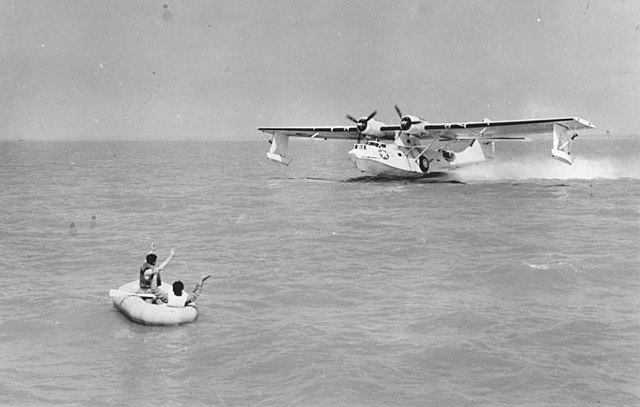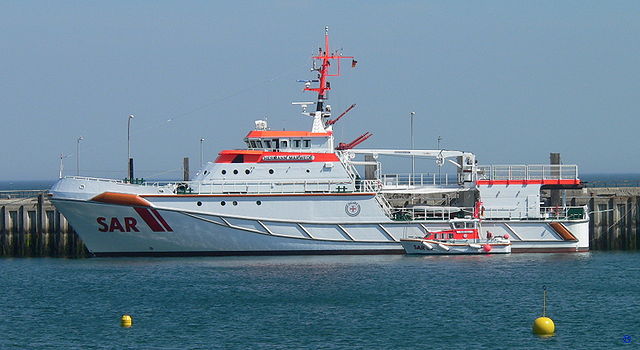Air-sea rescue, and aeronautical and maritime search and rescue (AMSAR) by the ICAO and IMO, is the coordinated search and rescue (SAR) of the survivors of emergency water landings as well as people who have survived the loss of their seagoing vessel. ASR can involve a wide variety of resources including seaplanes, helicopters, submarines, rescue boats and ships. Specialized equipment and techniques have been developed. Both military and civilian units can perform air-sea rescue. Its principles are laid out in the International Aeronautical and Maritime Search and Rescue Manual. The International Convention on Maritime Search and Rescue is the legal framework that applies to international air-sea rescue.
A Royal Navy rescue helicopter in action above a boat
An Auckland Rescue Helicopter in action
The PBY Catalina was one of the most popular flying boats used for air-sea rescue.
The Type Two 63 ft High-speed launch, designed by Hubert Scott-Paine in 1937.
Search and rescue (SAR) is the search for and provision of aid to people who are in distress or imminent danger. The general field of search and rescue includes many specialty sub-fields, typically determined by the type of terrain the search is conducted over. These include mountain rescue; ground search and rescue, including the use of search and rescue dogs ; urban search and rescue in cities; combat search and rescue on the battlefield and air-sea rescue over water.
A Canadian Forces AgustaWestland CH-149 Cormorant helicopter hoists a man from a Canadian Coast Guard ship
A SAR cruiser of the German Maritime Search and Rescue Service
Rescue rope training
Search and Rescue students give the "I am all right" signal to let the SAR instructors know that they are ready for further instructions at the pool on board Naval Station San Diego.








